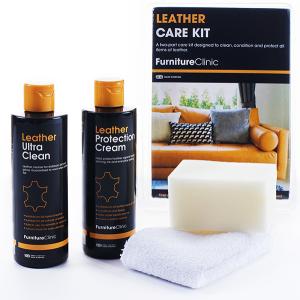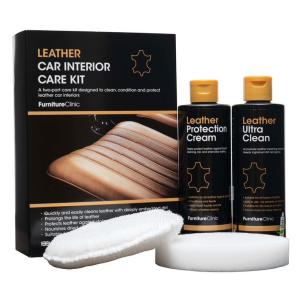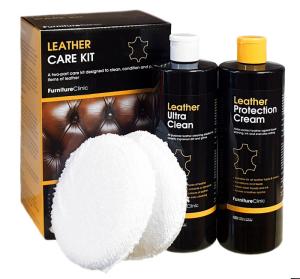Different Types Of Leather
Leather is a soft and natural material, and if not properly cared for, its lifespan is significantly reduced. The softness of leather is maintained with various oils, which evaporate and/or dry out over time, causing the leather to harden and eventually crack. These problems often arise due to age, exposure to temperature changes, sun bleaching, everyday wear, and insufficient care with the right products.
Leather comes from animals. It is commonly said that "skin" comes from small animals, while "leather" is made from larger animals' hides. For furniture, hides from larger animals are almost exclusively used, often byproducts of slaughter and meat production. In the Nordic countries, the quality of hides is considered very good due to the good conditions of livestock, meaning scars and marks from barbed wire, thorny bushes, and skin diseases are not common on the hides. Good hides result in fine leather.
The hides are tanned and treated in tanneries. Different methods produce different types of leather:
Aniline The finest leather is typically treated into aniline leather. It is fully dyed through and not surface-treated, nor does it have any covering color, just a thin finish layer on the surface. This results in a beautiful natural leather surface with deep and natural color variations. The leather is incredibly soft and comfortable with excellent breathability, but it is also highly sensitive to stains and dirt. Aniline requires maintenance and should ideally be treated 3-4 times a year to retain its qualities. Applying a protective cream can help prevent oils from skin and hair, as well as stains and dirt, from penetrating the leather.
Pull-up Leather This is the same type of leather as aniline, with the difference that the leather has been treated and worked with various oils and fats, giving it a special character. The name "pull-up" comes from the effect when stretching or "pulling" the leather, or when tightly stretching it over something like furniture, causing the leather to shift in color and appearance, adding vibrancy and luster to the leather. In some pull-up leathers, the surface is also treated with a special wax mixed with paraffin, giving the leather even more character. Regular treatment with oils and balms is required to maintain its quality. With proper care, the leather will develop a beautiful patina and have a long lifespan.
Semi-aniline Semi-aniline leather undergoes the same tanning process as aniline leather, but it is then treated with a thin layer of covering color and finish to make the leather more resistant to stains and dirt, without significantly altering the natural softness and comfort of aniline leather.
Pigmented or Covered Leather After tanning and dyeing, the leather is treated with a surface layer of color and finish, which hides scars and marks in the leather, allowing the use of lower-quality leather. The covering color makes the leather highly resistant to dirt and wear, and it is also easy to wipe clean if it becomes dirty or stained. However, the downside is that the leather no longer feels as soft and natural, and its natural grain and color have been replaced with a flat, uniform surface without depth or variation. The leather also doesn't breathe as well, and it becomes harder for balms and conditioners to penetrate. Often, a new pattern is embossed into the leather’s surface, which is particularly common in car interiors.
Suede A leather hide has two sides: grain and suede. The grain side is the outer side, typically covered by the animal’s hair. The suede is the inner side, or flesh side, which is sanded to create a smooth and even surface. Often, leather used for suede has a poor grain side, making it unsuitable for high-quality leather, so it is used as suede instead. Different animals’ hides produce different qualities of suede, such as sheepskin suede, pigskin suede, and cowhide suede.
The English word for suede comes from the French phrase "gants de suede," which literally means "gloves from Sweden," referring to a type of soft glove imported to France from Sweden in the early 19th century. The term quickly came to be used for all types of suede leather, regardless of origin.
Suede does not have the same protective surface as the grain side of leather, making it harder to maintain. It easily gets dirty, which is why suede is rarely used in furniture, though its soft texture makes it popular in clothing and footwear.
Nubuck Nubuck is sanded aniline leather, giving it a velvety surface but also making it difficult to clean and maintain, as it no longer has any protective coating. Its lightfastness is poor, and the leather tends to discolor easily.
Bycast A hide is split into two layers. The upper layer, the grain side, is used for higher-quality leather, such as aniline. The lower part is called split leather, which is cheaper than grain leather and lacks the same breathability and flexibility.
Bycast is made from split leather, where the leather is laminated with a polyurethane surface and embossed with a "leather pattern." This typically results in a shiny, somewhat plastic-looking surface. Since the surface is covered with plastic, there is no need to maintain the leather with balms or conditioners as they can’t penetrate the surface. Instead, maintenance involves cleaning the bycast leather’s surface, for example, by applying a protective cream to prevent dirt and stains from settling and making it easier to clean.
Bycast leather has a shorter lifespan than genuine leather because its surface is made of plastic, which cannot be maintained, and the laminated plastic surface tends to crack and peel after a few years of use. Unfortunately, not much can be done to fix such damage.








